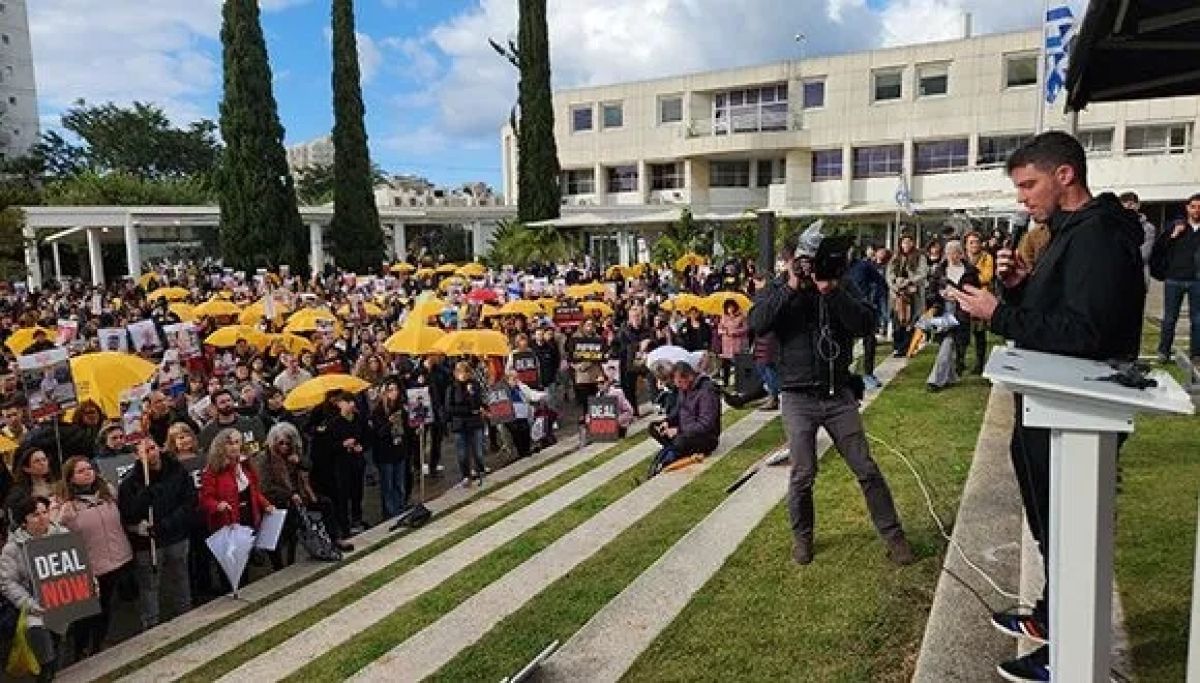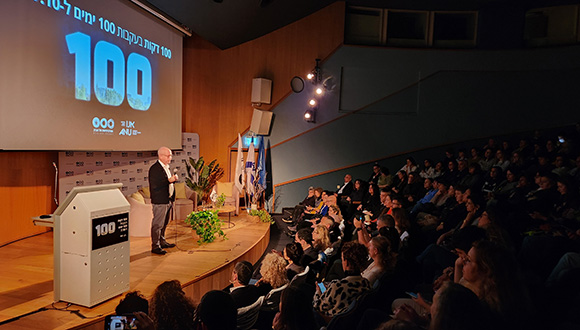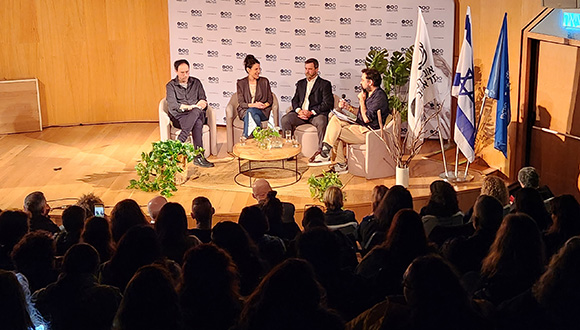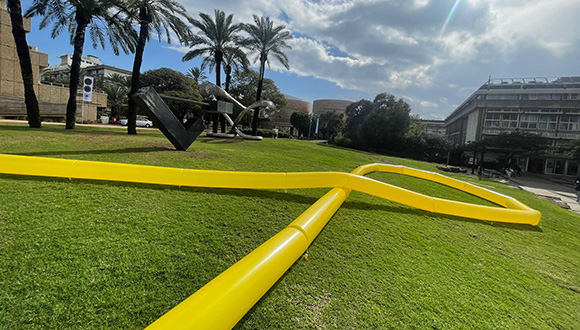Revolutionizing Plant Cloning: Boosting Global Agriculture?
Can better rooting in plant cloning improve crop variety, cost, and climate resilience?
In an extensive and multi-phased international study that lasted for eight years, led by researchers from the School of Plant Sciences and Food Security at TAU and the Volcani Institute, there were new compounds developed that significantly increased the rooting efficiency of cuttings (typically small branches) taken from mature trees. The researchers explain that getting cuttings to root is a critical component in modern agriculture: “A significant number of fruit trees, as well as forest trees and ornamental plants, are today based on cutting propagation: the creation of plants that are genetic clones of an individual with desirable characteristics. Improving the rooting process can contribute to global agriculture in various aspects: developing new, high-quality varieties, lowering prices for farmers and consumers, increasing the economic viability of new cultivars of crops, and adapting crops to the changing climate conditions”.
Enhancing Nature
The research was led by Dr. Roy Weinstain, research student Ohad Roth from the School of Plant Sciences and Food Security at TAU and Dr. Einat Sadot from the Institute of Plant Sciences at the Volcani Institute. Also participating in the research were Dr. Inna Vints from the TAU School of Plant Sciences and Food Security, Prof. Nir Ben-Tal and Dr. Amit Kessel from the Department of Biochemistry and Molecular Biology at TAU, Sela Yechezkel, Ori Serero, Avi Eliyahu, Pan Tzeela, Dr. Vikas Dwivedi, Dr. Mira Carmeli-Weissberg, Felix Shaya, and Dr. Adi Faigenboim-Doron from the Volcani Institute and Prof. Joseph Riov from the Faculty of Agriculture of the Hebrew University of Jerusalem. The study was in collaboration with researchers from the USA, Germany, Denmark and England and published in the prestigious journal Nature Biotechnology.

Left to right: Dr. Einat Sadot, Dr. Roy Weinstain, Ohad Roth & Sela Yechezkel. Photo credit: The Volcani Institute.
Dr. Sadot explains: “vegetative propagation through cuttings is a method used to propagate plants asexually – not through seeds. In this method, a branch is selected from a plant with desirable properties (e.g. fruit taste, drought resistance, disease resistance, etc.), and parts of that branch, called cuttings or propagules, are exposed to conditions that cause them to grow roots and become independent plants. The new individuals created this way were actually clones with the same genetics as the mother plant. For a crop to be economically viable, rooting percentages of at least 50-60% are necessary, and this figure is a significant consideration for farmers. Rooting percentages vary between different genuses of the same family, between different species of the same genus, and even between different cultivars of the same species, and there are important agricultural plants that are particularly difficult to root”.
Cutting-Edge, Literally
To improve the percentage of plants developing roots, it is necessary to expose cuttings to the plant hormone auxin – a procedure that was discovered more than 70 years ago and has hardly changed since. Dr. Weinstain: “The effectiveness of the existing auxin treatment varies from plant to plant. Numerous agriculturally important plants hardly respond to the standard auxin treatment in terms of root formation that couldn’t be commercialized. In our study, we sought to increase the effect of auxin on the cuttings. Evidence in the scientific literature and observations by experts in the field led us to address the question: will a slow release of the auxin in the plant increase the rooting success of the cuttings?” To do this, the researchers first created a ‘library’ of materials based on synthetic auxin conjugates – molecules in which a synthetic auxin attaches to another chemical group that neutralizes its activity but can be released slowly in plant cells. The library was examined using cuttings from a mature Eucalyptus grandis tree, in which the standard auxin treatment reached low rooting percentages of only 10-15%.
Research student Ohad Roth explains: “The initial examination identified several compounds that have a positive effect on the rooting process, and further research focused on the most effective one. We discovered that this compound enables a combination of high permeability to the plant with a prolonged release of the active substance, the synthetic auxin, so that the auxin stays in the plant much longer, up to a week and a half”. Indeed, the upgraded treatment increased the rooting percentage of the Eucalyptus grandis cuttings to 60% – up to 6 times higher than the rooting percentages found using the standard method.
Later, to more deeply understand the new compound’s mode of action, the researchers used the model plant Arabidopsis thaliana. They discovered that the synthetic auxin used in the new material is more stable (breaks down more slowly) in the plant cells compared to the auxin used in the standard treatment. In addition, the researchers identified a family of enzymes in the plant that are responsible for the release of the synthetic auxin. By modeling these enzymes’ structure and biochemical properties, they have identified important characteristics of their activity.
In the next step, the researchers wanted to see if similar enzymes are also present in other plants – assumingly their presence will allow the new material to be used as well as in other crops. They discovered that this family of enzymes is very ancient and preserved throughout evolution in every tree tested. In light of the encouraging findings, they began to test the effectiveness of the materials they developed on various crops.
Transforming Argan Trees to Agricultural Crops
One of the most meaningful crops examined in the study is the argan – the Moroccan oil tree. The researchers: “The global demand for argan oil is increasing by the years because of its incorporation to a large variety of food, health and skincare products. But to date, the almost exclusive source of this oil is the fruits of argan trees that grow endemically in Morocco and multiply by sexual reproduction, i.e. through seeds. All efforts to turn argan into an agricultural crop, which can be propagated by rooting cuttings, have failed – including attempts here in Israel. In our research, we took cuttings from several argan trees growing in Israel, exposed them to the material we developed, and, this way, succeeded in producing large seedlings from elite selections. In collaboration with the Kibbutzim of Ketura, Beit Kama, Hatzerim and Samar, we planted argan plots based on cuttings from individual specimens, which were rooted using the new rooting material, and we are now examining the possibility of turning them into an agricultural crop”.

Encouraging results were also observed in experiments with cuttings from apple trees rootstocks, poplar and other varieties of eucalyptus. Higher rooting percentages were achieved in all of them – twice as high or more when compared to the standard auxin treatment. The researchers conclude: “During the research, we developed a material that significantly improves the rooting percentages of cuttings from mature trees. The development could be significant for global agriculture in three aspects:
● Cost reduction: improving the efficacy of the rooting procedure may significantly reduce the cost of procuring seedlings for farmers and, ultimately, the agricultural produce for consumers.
● Improved produce quality: Thanks to the new method, more high-quality cultivars could developed and traded, negating the need to ‘compromise’ on lower-quality varieties simply because they have high rooting rates.
● Environmental compatibility: developing new crop cultivars that adapt to climate change conditions is imperative to sustain agricultural output. The new method can expedite this process and make it more efficient.
In follow-up studies, we plan to deepen the understanding of the new substances’ mechanisms of action and look for additional compounds, perhaps even more effective ones, that can be used as conjugates to slow down the release of auxin in the plant.”





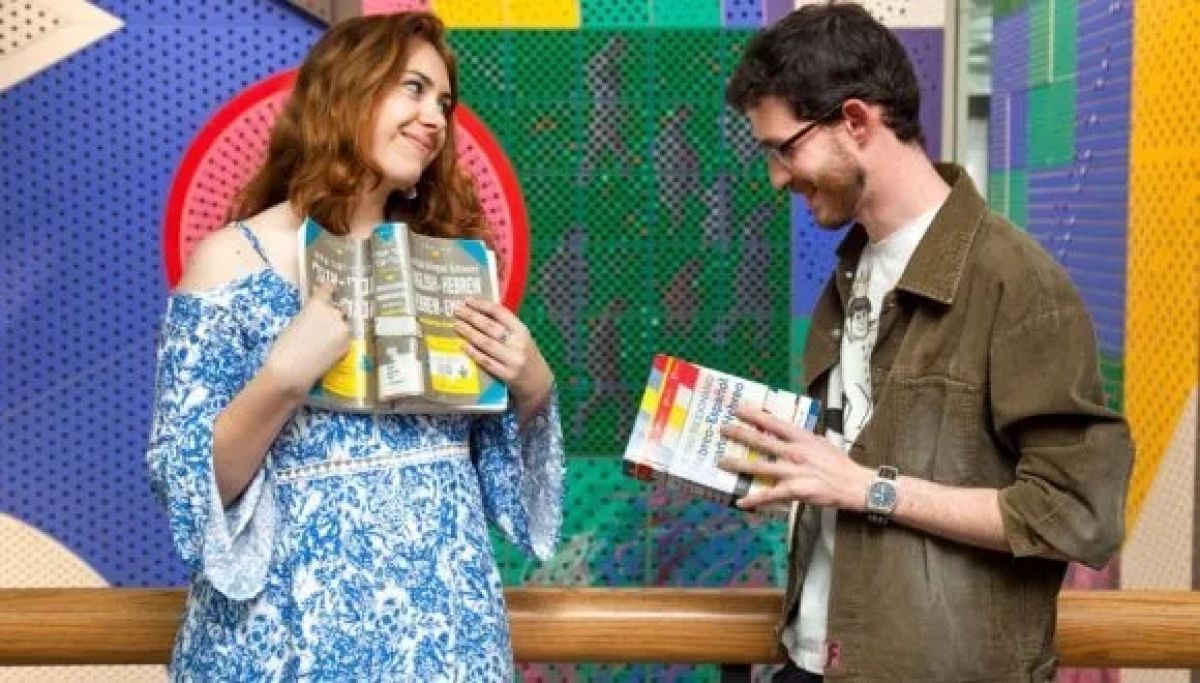

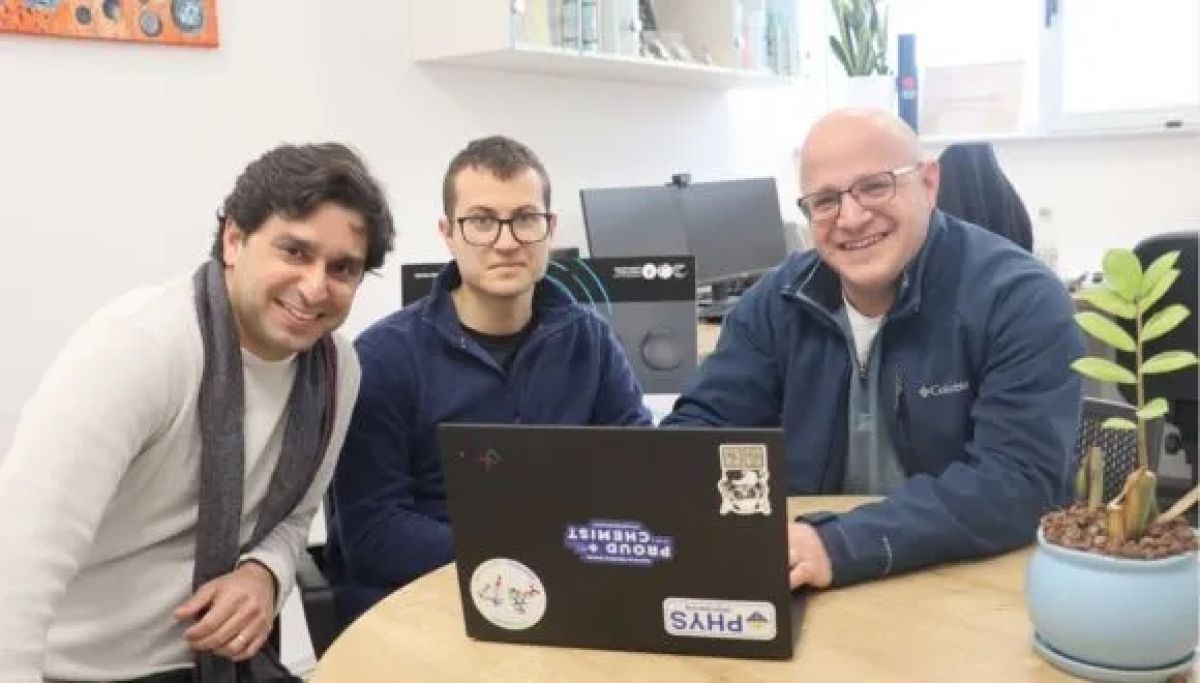

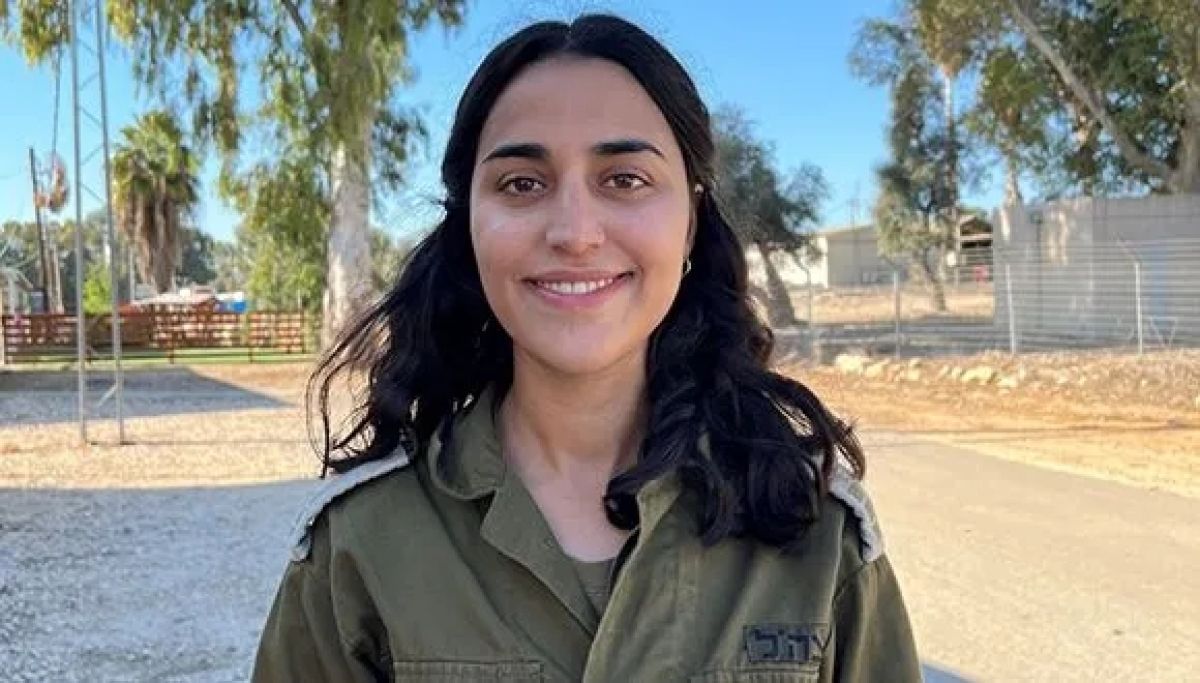

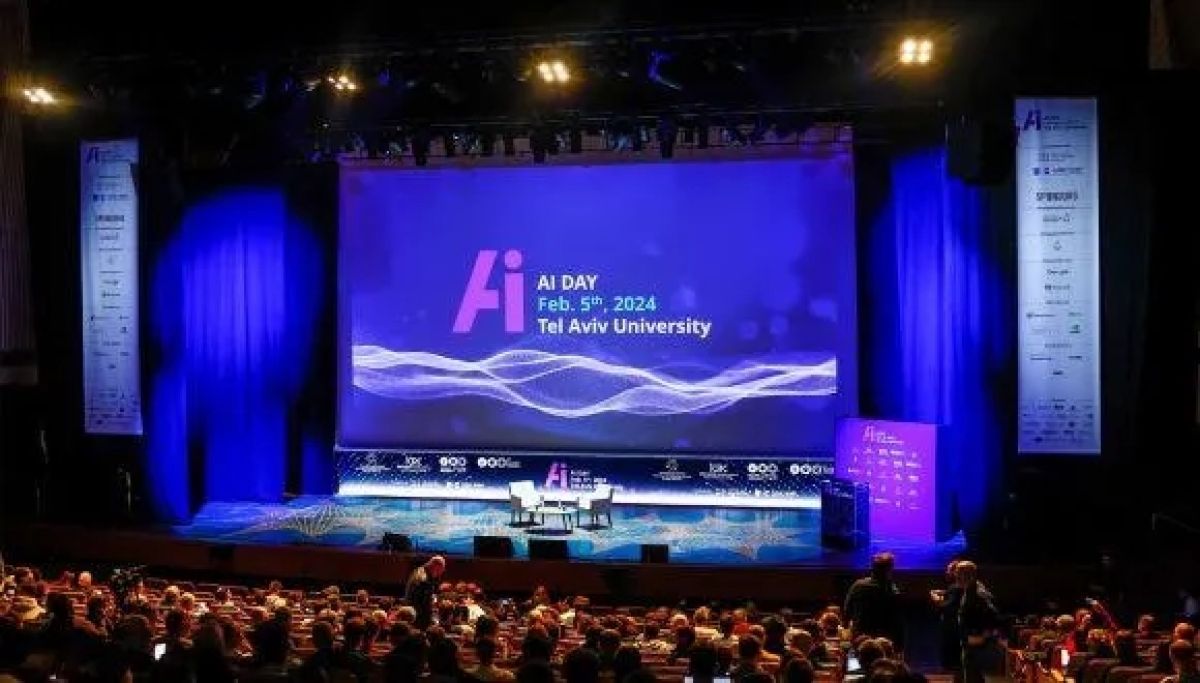
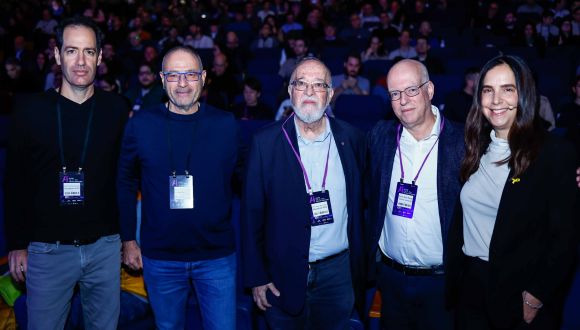 Yorai Fainmesser (Co-Founder, General Partner at Disruptive AI VC), Professor Meir Feder (Tel Aviv University), Major General Isaac Ben Israel (Director of TAU Blavatnik ICRC), Professor Ariel Porat (President of Tel Aviv University), Gili Drob-Heistein (Executive Director of the Blavatnik ICRC). Photo courtesy of Blavatnik ICRC
Opening the AI Day 2024, Professor Ariel Porat, President of Tel Aviv University, emphasized that the AI Day embodies the resilient spirit of Tel Aviv University and the country – as Israel does not have the privilege to suspend all activities for a year, nor can the university stop training students and producing research.
While a full AI week will take place later in the year, alongside the Cyber Week scheduled for June, a one-day event is a testament to the strength of Israel as a nation in these trying times.
Yorai Fainmesser (Co-Founder, General Partner at Disruptive AI VC), Professor Meir Feder (Tel Aviv University), Major General Isaac Ben Israel (Director of TAU Blavatnik ICRC), Professor Ariel Porat (President of Tel Aviv University), Gili Drob-Heistein (Executive Director of the Blavatnik ICRC). Photo courtesy of Blavatnik ICRC
Opening the AI Day 2024, Professor Ariel Porat, President of Tel Aviv University, emphasized that the AI Day embodies the resilient spirit of Tel Aviv University and the country – as Israel does not have the privilege to suspend all activities for a year, nor can the university stop training students and producing research.
While a full AI week will take place later in the year, alongside the Cyber Week scheduled for June, a one-day event is a testament to the strength of Israel as a nation in these trying times.
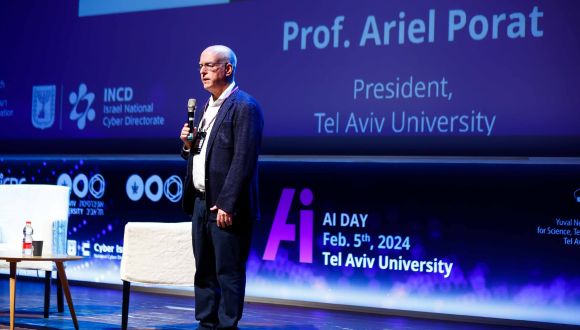 Professor Ariel Porat, President of Tel Aviv University (Photo courtesy of Blavatnik ICRC)
Prof Porat underscored TAU’s commitment to developing AI and data science expertise through its recently established multidisciplinary center that offers a cluster of AI and data science courses to TAU students from all faculties.
Professor Ariel Porat, President of Tel Aviv University (Photo courtesy of Blavatnik ICRC)
Prof Porat underscored TAU’s commitment to developing AI and data science expertise through its recently established multidisciplinary center that offers a cluster of AI and data science courses to TAU students from all faculties.
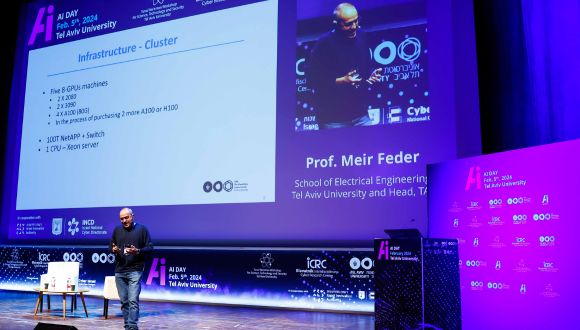 Professor Meir Feder, Tel Aviv University (Photo courtesy of Blavatnik ICRC)
Prof. Feder remarked that, presently, AI falls short of true intelligence, characterizing it as a clever ‘cut and paste’ solution devoid of genuine creativity.
Professor Meir Feder, Tel Aviv University (Photo courtesy of Blavatnik ICRC)
Prof. Feder remarked that, presently, AI falls short of true intelligence, characterizing it as a clever ‘cut and paste’ solution devoid of genuine creativity.
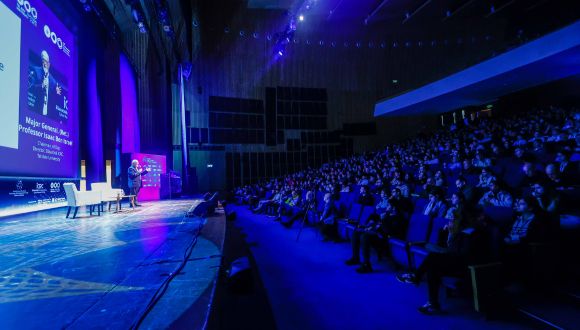 Major General Isaac Ben Israel, Director of TAU Blavatnik ICRC (Photo courtesy of Blavatnik ICRC)
Given the critical significance of cybersecurity in light of the rapid proliferation of AI, a dedicated conference track was exclusively focused on security issues. The track centered on exploring the utilization of AI in intelligence gathering and analysis, threat detection, alert investigation, security posture analysis, and other pertinent areas to boost the effectiveness of security teams in their daily operations.
Major General Isaac Ben Israel, Director of TAU Blavatnik ICRC (Photo courtesy of Blavatnik ICRC)
Given the critical significance of cybersecurity in light of the rapid proliferation of AI, a dedicated conference track was exclusively focused on security issues. The track centered on exploring the utilization of AI in intelligence gathering and analysis, threat detection, alert investigation, security posture analysis, and other pertinent areas to boost the effectiveness of security teams in their daily operations.
 (Photo courtesy of Blavatnik ICRC)
The solution can adjust the length and tone of the comments, as well as the level of formality and political and ideological stance to suit the target language and culture. It is also capable of understanding context and captions.
Using AI on social media provides for faster and more impactful responses across multiple platforms. The AI agent can also predict how popular the content will be and estimate confidence in the response. In addition, it can report hateful posts found online.
(Photo courtesy of Blavatnik ICRC)
The solution can adjust the length and tone of the comments, as well as the level of formality and political and ideological stance to suit the target language and culture. It is also capable of understanding context and captions.
Using AI on social media provides for faster and more impactful responses across multiple platforms. The AI agent can also predict how popular the content will be and estimate confidence in the response. In addition, it can report hateful posts found online.
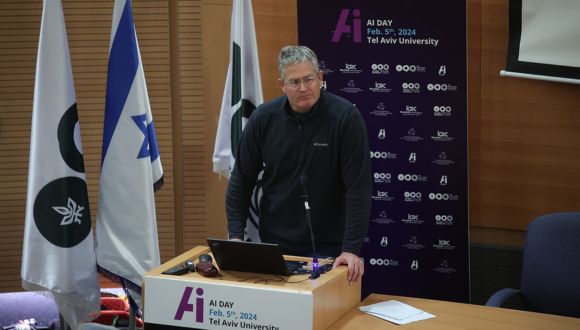 Prof. Ben Gal (Photo courtesy of Blavatnik ICRC)
Prof. Ben Gal illustrated this approach with the example of the Gaza hospital attack, where an immediate surge in coordinated activity by a significant number of bots was observed.
Prof. Ben Gal (Photo courtesy of Blavatnik ICRC)
Prof. Ben Gal illustrated this approach with the example of the Gaza hospital attack, where an immediate surge in coordinated activity by a significant number of bots was observed.
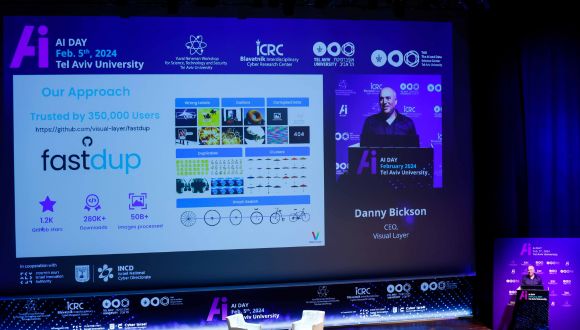 Danny Bickson, CEO of Visual Layer (Photo courtesy of Blavatnik ICRC)
Computer vision experts have also been working with war footage, managing, exploring and visualizing war crime videos. Danny Bickson, CEO of Visual Layer, a startup creating & maintaining the popular open source fastdup for managing large-scale visual data, detailed the pro bono work the company has been doing for the Ministry of Diaspora and Ministry of Defense.
Danny Bickson, CEO of Visual Layer (Photo courtesy of Blavatnik ICRC)
Computer vision experts have also been working with war footage, managing, exploring and visualizing war crime videos. Danny Bickson, CEO of Visual Layer, a startup creating & maintaining the popular open source fastdup for managing large-scale visual data, detailed the pro bono work the company has been doing for the Ministry of Diaspora and Ministry of Defense.
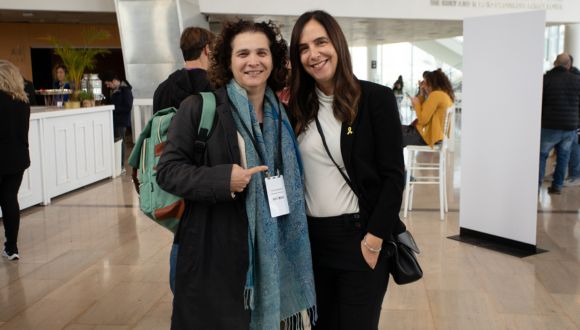 Professor Karine Nahon, Reichman University, and Gili Drob-Heistein, Executive Director of the Blavatnik ICRC and Yuval Ne’eman Workshop for Science, Technology and Security (Photo courtesy of Blavatnik ICRC)
The volunteer initiative spearheaded by Nahon brought together 1500 people from academia and industry. They collaborated to pool data from diverse online sources, including Hamas’s telegram channels, content uploaded by individuals on the ground, and footage from Hamas terrorists. The goal of the team was to devise effective strategies for identifying hostages and kidnappers.
Professor Karine Nahon, Reichman University, and Gili Drob-Heistein, Executive Director of the Blavatnik ICRC and Yuval Ne’eman Workshop for Science, Technology and Security (Photo courtesy of Blavatnik ICRC)
The volunteer initiative spearheaded by Nahon brought together 1500 people from academia and industry. They collaborated to pool data from diverse online sources, including Hamas’s telegram channels, content uploaded by individuals on the ground, and footage from Hamas terrorists. The goal of the team was to devise effective strategies for identifying hostages and kidnappers.
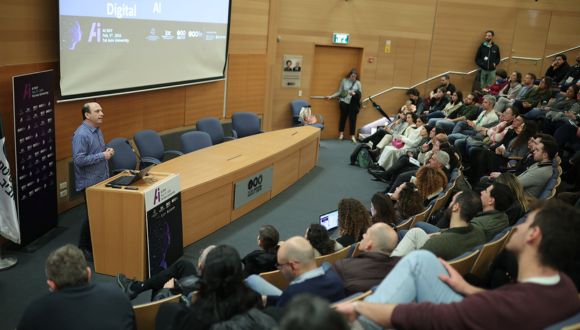 Professor Noam Shomron, TAU ( (Photo courtesy of Blavatnik ICRC)
Professor Erez Shmueli, Head of the Big Data Lab and Co-Head of the Data Science undergraduate program at Tel Aviv University, presented findings from a study monitoring early signs of PTSD in individuals indirectly exposed to the October 7 events. The results reveal unprecedented levels of stress and PTSD among participants.
Professor Noam Shomron, TAU ( (Photo courtesy of Blavatnik ICRC)
Professor Erez Shmueli, Head of the Big Data Lab and Co-Head of the Data Science undergraduate program at Tel Aviv University, presented findings from a study monitoring early signs of PTSD in individuals indirectly exposed to the October 7 events. The results reveal unprecedented levels of stress and PTSD among participants.
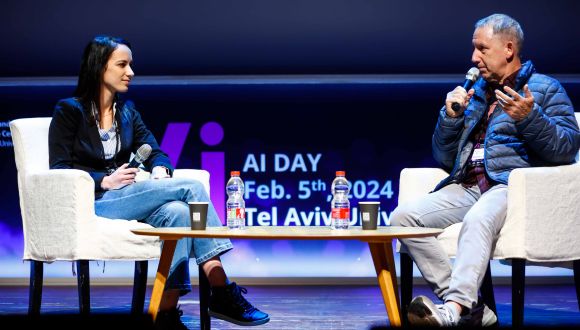 Mor Geva, Assistant Professor at the Blavatnik School of Computer Science, Tel Aviv University and Professor Yoav Shoham, Co-founder and Co-CEO at AI21 Labs (Photo courtesy of Blavatnik ICRC)
Shoham emphasized that the relationship with machines will be transformative for humanity rather than destructive. He envisions a future where machines and humans coexist and collaborate.
Mor Geva, Assistant Professor at the Blavatnik School of Computer Science, Tel Aviv University and Professor Yoav Shoham, Co-founder and Co-CEO at AI21 Labs (Photo courtesy of Blavatnik ICRC)
Shoham emphasized that the relationship with machines will be transformative for humanity rather than destructive. He envisions a future where machines and humans coexist and collaborate.
 Dr. Ziv Katzir, head of the National AI program (Photo courtesy of Blavatnik ICRC)
Locally, the National AI program shifted focus to practical solutions, emphasizing natural language processing for Hebrew and spoken Arabic, AI talent development through scholarships at all levels of higher education, investment in computer infrastructure, wider AI application in the public sector, and the development of a legal framework for trustworthy AI.
Dr. Ziv Katzir, head of the National AI program (Photo courtesy of Blavatnik ICRC)
Locally, the National AI program shifted focus to practical solutions, emphasizing natural language processing for Hebrew and spoken Arabic, AI talent development through scholarships at all levels of higher education, investment in computer infrastructure, wider AI application in the public sector, and the development of a legal framework for trustworthy AI.
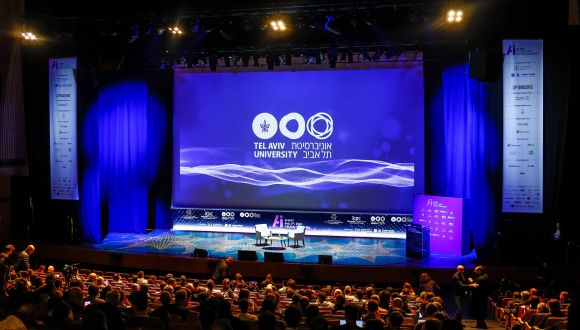 (Photo courtesy of Blavatnik ICRC)
AI Day 2024, held at Tel Aviv University in cooperation with the Israel Innovation Authority and Israel National Cyber Directorate, captured the collaborative spirit of experts and industry leaders, emphasizing AI’s role in driving positive change. Beyond a gathering, AI Day 2024 embodied a commitment to a future where AI propels innovation and progress in tangible ways.
(Photo courtesy of Blavatnik ICRC)
AI Day 2024, held at Tel Aviv University in cooperation with the Israel Innovation Authority and Israel National Cyber Directorate, captured the collaborative spirit of experts and industry leaders, emphasizing AI’s role in driving positive change. Beyond a gathering, AI Day 2024 embodied a commitment to a future where AI propels innovation and progress in tangible ways.
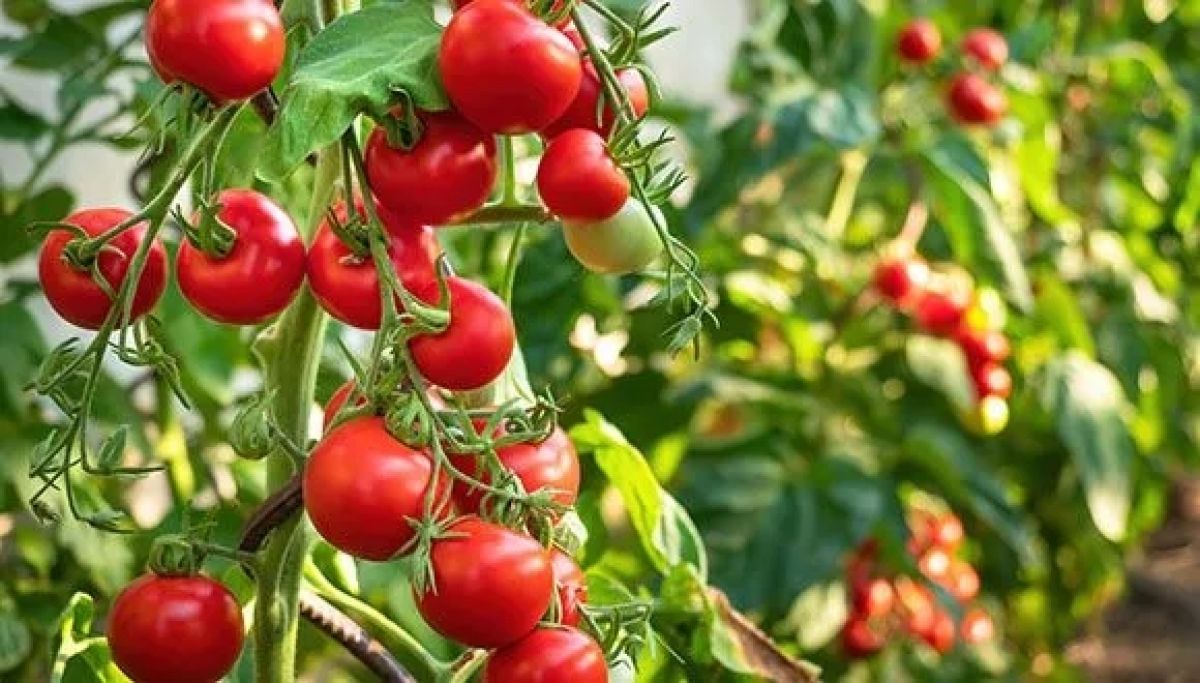
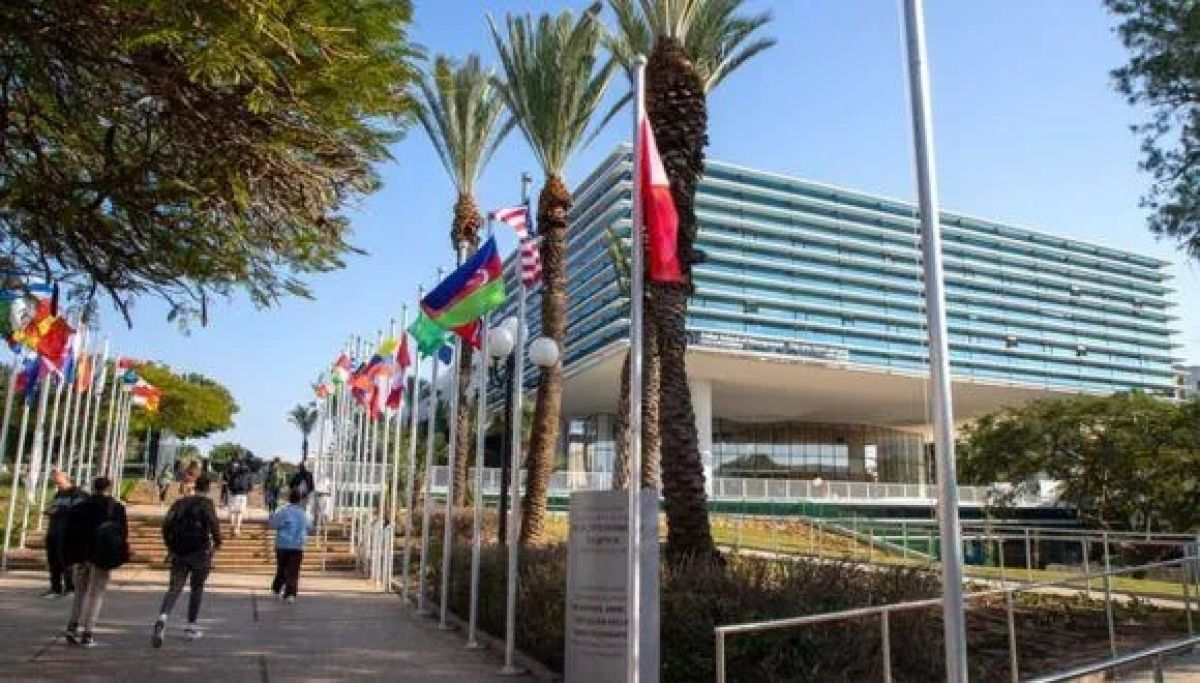
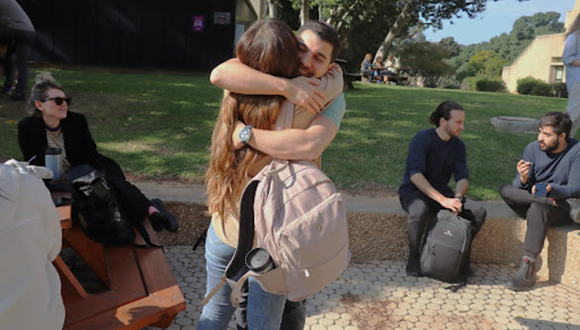 Nevertheless, for those students who have returned, there is something they can all agree on: having classes to go to again, being with their peers again, is something for which they are entirely grateful.
Nevertheless, for those students who have returned, there is something they can all agree on: having classes to go to again, being with their peers again, is something for which they are entirely grateful.
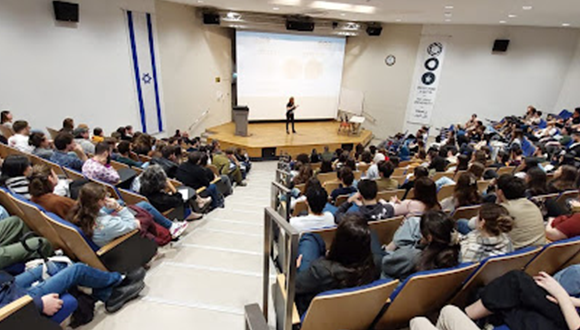 For instance, while classes are currently offered in a hybrid format and can be watched online, Joffe notes that attending in person at TAU is far more popular.
For instance, while classes are currently offered in a hybrid format and can be watched online, Joffe notes that attending in person at TAU is far more popular.
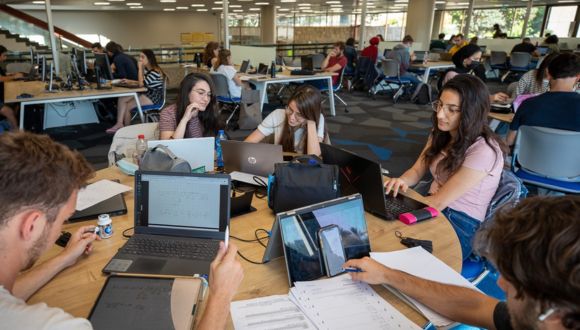 Joffe emphasizes that every Israeli has been impacted significantly by October 7; for her, a girl in her program was murdered and she had two family friends taken hostage (they have since been released).
Yet, despite difficult emotions, Joffe emphasizes that being back in university is the right move for her: “I’m a new immigrant and everyone I know in Israel is from university,” she says. “I don’t know what I would do in Israel without university right now, so I’m very happy it started again.”
Joffe emphasizes that every Israeli has been impacted significantly by October 7; for her, a girl in her program was murdered and she had two family friends taken hostage (they have since been released).
Yet, despite difficult emotions, Joffe emphasizes that being back in university is the right move for her: “I’m a new immigrant and everyone I know in Israel is from university,” she says. “I don’t know what I would do in Israel without university right now, so I’m very happy it started again.”
 She arrived on December 28 and said she’s been enjoying classes since the start of the term and is focused on setting up her life here. “I’m just trying to make some connections with my new friends, new classmates,” she said.
Zengyu also previously completed her
She arrived on December 28 and said she’s been enjoying classes since the start of the term and is focused on setting up her life here. “I’m just trying to make some connections with my new friends, new classmates,” she said.
Zengyu also previously completed her 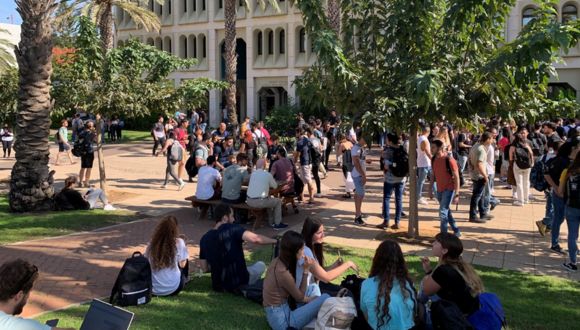 However, he got called up for duty the evening of October 7 and had to report to a base in the south of Israel the next morning.
“I’m stuck in my third year,” says Gazit. While Gazit continues to work full-time in the military, he was recently restationed somewhere in central Israel and at that point, he approached his commander and got special permission to take a German course through TAU.
However, he got called up for duty the evening of October 7 and had to report to a base in the south of Israel the next morning.
“I’m stuck in my third year,” says Gazit. While Gazit continues to work full-time in the military, he was recently restationed somewhere in central Israel and at that point, he approached his commander and got special permission to take a German course through TAU.
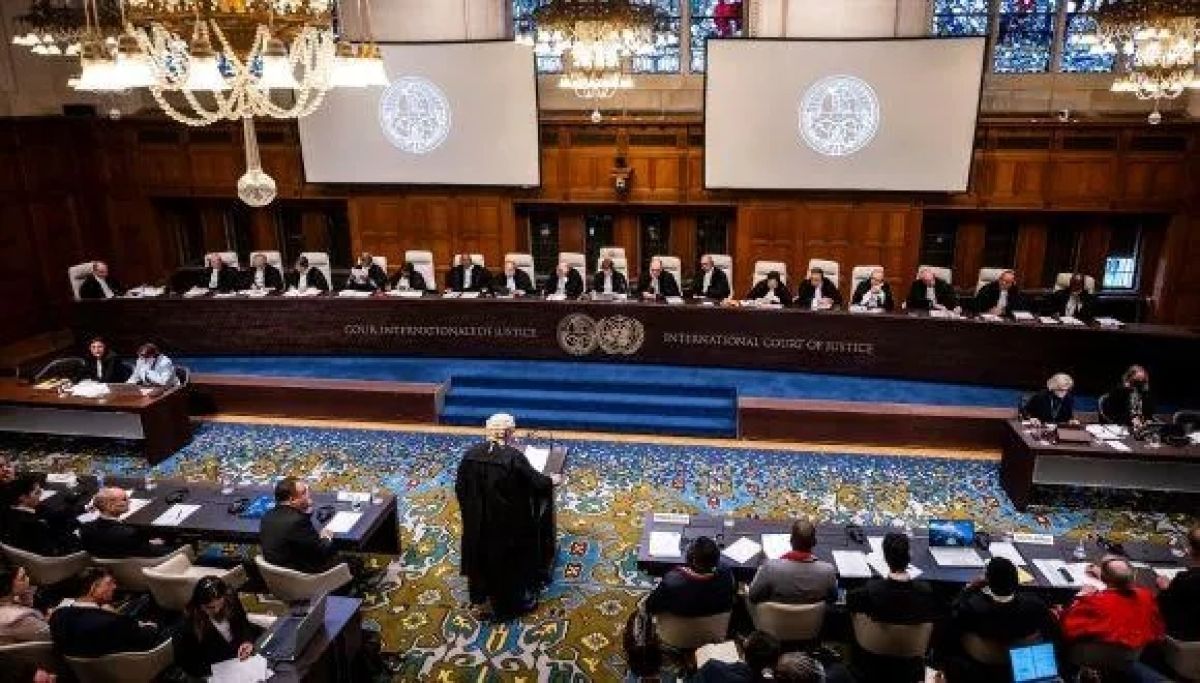
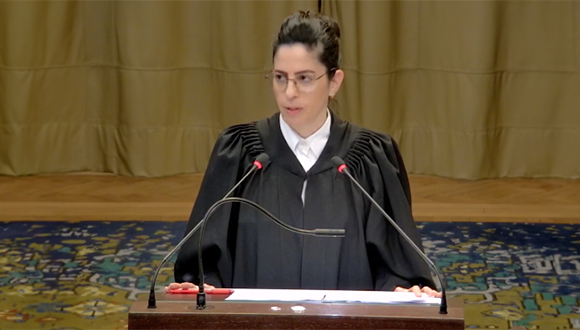 Dr. Galit Raguan, an alumna of Tel Aviv University and a member of Israel’s legal delegation. (Image courtesy of the ICJ. All rights reserved)
While a final resolution on the case is expected to take years, South Africa has requested that, in the interim, the ICJ make
Dr. Galit Raguan, an alumna of Tel Aviv University and a member of Israel’s legal delegation. (Image courtesy of the ICJ. All rights reserved)
While a final resolution on the case is expected to take years, South Africa has requested that, in the interim, the ICJ make 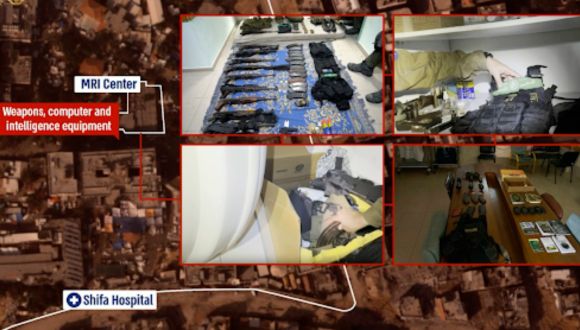 As presented by Israel’s legal team in court, the IDF found Hamas intelligence information and multiple weapons caches at Gaza’s Shifa Hospital, including in the MRI Center. (Image courtesy of the ICJ. All rights reserved)
Raguan also outlined the role of the IDF’s dedicated military unit Coordination of Government Activities in the Territories (COGAT), which oversees border crossings from Israel and works with the United Nations (UN) and other international organizations to facilitate the entry of humanitarian aid into Gaza. Despite an attack on COGAT on October 7, Raguan said the unit has extended its operating hours at both the Kerem Shalom and Rafah crossings to receive more humanitarian goods.
Raguan also said the unit has assisted with establishing four field hospitals and two floating hospitals, getting new ambulances into Gaza and the coordination of air drops. She highlighted how humanitarian assistance continues and that no limitations have been posed, even though “Hamas is regularly stealing aid at the expense of its own population.”
As presented by Israel’s legal team in court, the IDF found Hamas intelligence information and multiple weapons caches at Gaza’s Shifa Hospital, including in the MRI Center. (Image courtesy of the ICJ. All rights reserved)
Raguan also outlined the role of the IDF’s dedicated military unit Coordination of Government Activities in the Territories (COGAT), which oversees border crossings from Israel and works with the United Nations (UN) and other international organizations to facilitate the entry of humanitarian aid into Gaza. Despite an attack on COGAT on October 7, Raguan said the unit has extended its operating hours at both the Kerem Shalom and Rafah crossings to receive more humanitarian goods.
Raguan also said the unit has assisted with establishing four field hospitals and two floating hospitals, getting new ambulances into Gaza and the coordination of air drops. She highlighted how humanitarian assistance continues and that no limitations have been posed, even though “Hamas is regularly stealing aid at the expense of its own population.”
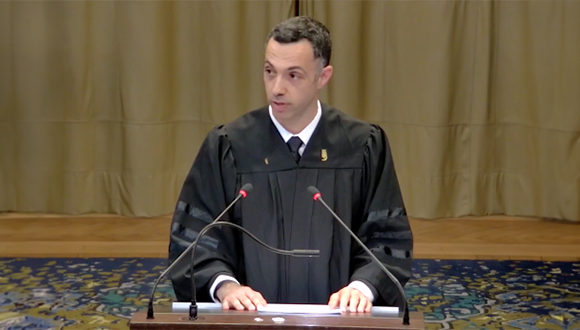 Dr. Omri Sender, an alumnus of Tel Aviv University and a member of Israel’s legal delegation. (Image courtesy of the ICJ. All rights reserved)
Sender noted that, before the war, approximately 70 trucks carrying food entered Gaza every day, whereas in the first two weeks of January 109 trucks entered each day. He also highlighted that the amount of cooking gas entering Gaza had doubled to 90 tons per day since December 21; moreover, since December 8, the amount of fuel entering Gaza had also doubled and now meets the target requested by the UN: 180,000 liters per day.
Sender also pointed to the fact that the hostilities in Gaza are winding down, and he stated that Israel has already started to transition to a phase with fewer ground troops and less intense fighting.
Furthermore, as argued by team lead Prof. Malcolm Shaw KC, South Africa also failed to effectively illustrate Israel’s intent to commit genocide. Given the case is at the provisional measures phase, genocidal acts do not have to be proven; demonstrating plausible intent would be enough for the court to intervene. However, as Shaw contended, to do this one must directly link any potential utterance or statement to on-the-ground policy. In this, South Africa failed, Shaw argued.
Dr. Omri Sender, an alumnus of Tel Aviv University and a member of Israel’s legal delegation. (Image courtesy of the ICJ. All rights reserved)
Sender noted that, before the war, approximately 70 trucks carrying food entered Gaza every day, whereas in the first two weeks of January 109 trucks entered each day. He also highlighted that the amount of cooking gas entering Gaza had doubled to 90 tons per day since December 21; moreover, since December 8, the amount of fuel entering Gaza had also doubled and now meets the target requested by the UN: 180,000 liters per day.
Sender also pointed to the fact that the hostilities in Gaza are winding down, and he stated that Israel has already started to transition to a phase with fewer ground troops and less intense fighting.
Furthermore, as argued by team lead Prof. Malcolm Shaw KC, South Africa also failed to effectively illustrate Israel’s intent to commit genocide. Given the case is at the provisional measures phase, genocidal acts do not have to be proven; demonstrating plausible intent would be enough for the court to intervene. However, as Shaw contended, to do this one must directly link any potential utterance or statement to on-the-ground policy. In this, South Africa failed, Shaw argued.
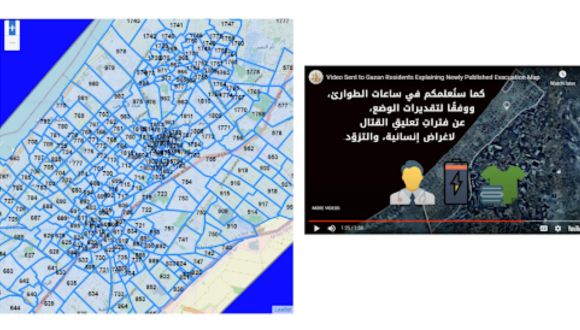 A map of evacuation zones created by the IDF to assist with civilian safety was shared in court, along with a screenshot of an instructional video in Arab of how to use the map (Image courtesy of the ICJ. All rights reserved)
To further support this claim, Shaw also provided evidence of daily IDF operational directives that, in accordance with international law and contradicting South Africa’s case, prioritize mitigating harm to and punishment of civilians.
A map of evacuation zones created by the IDF to assist with civilian safety was shared in court, along with a screenshot of an instructional video in Arab of how to use the map (Image courtesy of the ICJ. All rights reserved)
To further support this claim, Shaw also provided evidence of daily IDF operational directives that, in accordance with international law and contradicting South Africa’s case, prioritize mitigating harm to and punishment of civilians.
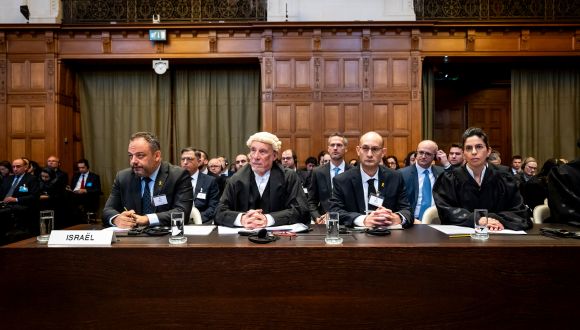 Members of Israel’s legal delegation at the International Court of Justice. (credit: UN Photo/ICJ-CIJ/Frank van Beek. Courtesy of the ICJ. All rights reserved)
Moreover, the general omission of Hamas from South Africa’s case was something, the Israel team argued, that demonstrated a high level of prejudice:
Members of Israel’s legal delegation at the International Court of Justice. (credit: UN Photo/ICJ-CIJ/Frank van Beek. Courtesy of the ICJ. All rights reserved)
Moreover, the general omission of Hamas from South Africa’s case was something, the Israel team argued, that demonstrated a high level of prejudice:
